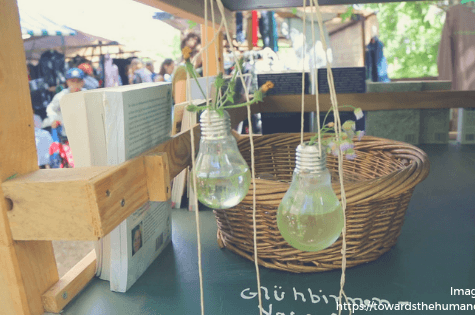What if we could get to the root of the climate crisis, and make our lives not less but more fulfilling at the same time? This is the question behind the Make it Circular Challenge, a new competition launched by What Design Can Do (WDCD) and the IKEA Foundation. From now until 11 January 2023, they’re inviting the global creative community to show us the best that circular design has to offer. This includes new ideas and existing innovations that prevent waste by rethinking our way of life: from what we eat and wear, to why we buy and how we build. The end goal? To find and create products, services and systems that are both user-centred and earth-centred — making a circular future more accessible for all.
Moving from Linear to Circular
For centuries, our economies have been based on the linear model, where raw materials are extracted, transformed into products which are used briefly, and then thrown away. The trouble with this model is that it is deeply exploitative, and runs on the assumption that infinite growth is possible on a finite planet. Today, we are seeing just how wrong this assumption was, and facing the consequences of a rapidly changing climate.
The good news? We now have an opportunity to shape a radically different future: one that’s restorative and regenerative by design. WDCD wants to support the creation of a circular society, in which resources are embedded in cycles rather than straight lines. If we make the shift today, we could eliminate waste from the start, prevent further damage to our ecosystems and reduce carbon emissions in the nick of time.
The hidden power of creativity
Making the transition demands that we change the way we design: from quick fixes to long-term solutions, from exploiting nature to collaborating with nature, from creating new materials to using what we already have. But design is not just about delivering new materials or technologies. Design is also about possibilities, and daring to imagine a future that’s more exciting than the past.
“Many people become lost in the face of so much outrage, fatigue and disinterest — but not creatives,” says Richard van der Laken, co-founder and creative director of WDCD. “The ability to imagine is the creative community’s ideal domain: seeing what does not yet exist, taking on a challenge, forging ahead with optimism.” This makes them brilliant agents of change, whether they work in advertising, product design, or architecture.
Building more than the economy
This is why the Make it Circular Challenge calls on designers everywhere to use their persuasive power for good. Submissions should respond to at least one of five categories reflecting the key aspects of a circular society. The Challenge talks in terms of society rather than economy, because a truly resilient system must also consider the social and ethical dimensions of how people live their lives, from sun-up to sun-down. It demands a transition that is inclusive and equitable, and that gives people the tools to participate in not just circular products but in circular ways of living. Here are five major areas in which creatives could make a difference:
WHAT WE EAT | covers the ways we grow, distribute, shop for, consume and discard food. So much could be gained by rethinking farming practices, redesigning the modern diet, or creating initiatives that encourage food sharing within communities.
WHAT WE WEAR | is about the clothes we put on our bodies and the textiles from which they are made. What if we could change the way we value these materials and make it easier for sustainable alternatives to be produced, used and reused? And how could doing so also address the social inequality that is rampant in the fashion industry?
WHAT WE BUY | refers to the countless consumer goods we use every day, from furniture to toys, home cleaning products and electronics. Here it’s also essential that we address why we buy in the first place. Could design help to repair people’s relationship with things?
HOW WE PACKAGE | asks you to rethink the flawed world of packaging. Because there are better ways to protect products using materials that are truly ethical and sustainable. Here we can think about innovating new materials, but also about making disposable things less desirable, and working with policymakers to enact change from the top.
HOW WE BUILD | reimagines the built environment and looks at how we construct the places where we live, work and play. This includes making circular decisions in new buildings for the growing population but also exploring ways to adapt existing structures and save precious resources.
Whatever you do, make it circular
Though these categories help to understand the many value chains that make the world go ‘round, it’s important to see them as parts of one whole. After all, many of the problems we currently face are inherently interconnected, whether we are talking about plastic waste in Kenya or the housing crisis in the Netherlands. It follows then, that the best solutions are, too. This is why circularity is such a powerful tool for climate action: not because it is a panacea, but because it is a set of principles that can be applied to everything that is designed.
Do you have an idea that contributes to a circular society? Submissions can be made online via the Make it Circular platform from 11 October 2022 until 11 January 2023. Winning ideas will be turned into reality with €10.000 in funding and a global development programme which has been co-created with Impact Hub.To follow along as the competition progresses, follow WDCD on Instagram, Twitter or Facebook. Apply for free at makeitcircular.whatdesigncando.com


